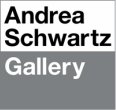Artist Statement
Like a horizon, crystalline is measured by relativity and contrast. An origin story of sorts; where one comes from and where one's heading.
In a rough stone, clarity is actively coaxed out through cutting and polishing to amplify light engagement and reveal the layered structure. Geometry and pattern are hallmarks to add perceived value and brilliance.
For over a decade glitter and resin has been a signature of my work and it’s messy, literally and figuratively. Glitter in particular is loaded with baggage of acceptable use by function, age, gender, orientation and conversely allegations or assumptions when used outside the conventionally approved structural prescription. Did you know that the auto industry is the number one patron of glitter per annum? I bet you thought it was all those kindergartners.
Through the years, I have sought materials to engage light; taking it in and sending it back out, at times even enlisting solar and UV sensitive pigments. My compositions have alluded to place, pattern and symbolism to record my pursuit to stay on the lighter side of life. The past year has been challenging; I have found myself looking to my past works like an emergency flare in the bewildered darkness to guide my way.
This collection of new paintings is like a favorites mix tape, a survey of past moves with a current clarity. All are titled after songs that have kept me company while painting in the studio or in my day to day; you might know the tune...Oh let it shine.
In a rough stone, clarity is actively coaxed out through cutting and polishing to amplify light engagement and reveal the layered structure. Geometry and pattern are hallmarks to add perceived value and brilliance.
For over a decade glitter and resin has been a signature of my work and it’s messy, literally and figuratively. Glitter in particular is loaded with baggage of acceptable use by function, age, gender, orientation and conversely allegations or assumptions when used outside the conventionally approved structural prescription. Did you know that the auto industry is the number one patron of glitter per annum? I bet you thought it was all those kindergartners.
Through the years, I have sought materials to engage light; taking it in and sending it back out, at times even enlisting solar and UV sensitive pigments. My compositions have alluded to place, pattern and symbolism to record my pursuit to stay on the lighter side of life. The past year has been challenging; I have found myself looking to my past works like an emergency flare in the bewildered darkness to guide my way.
This collection of new paintings is like a favorites mix tape, a survey of past moves with a current clarity. All are titled after songs that have kept me company while painting in the studio or in my day to day; you might know the tune...Oh let it shine.


